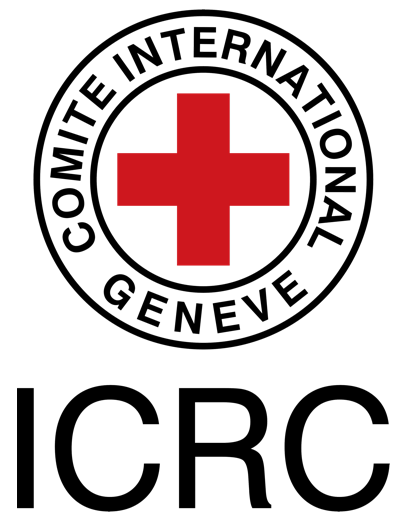Category:Pain
Pain is a common problem and the primary therapeutic objectives of physical therapists working with people in pain are the reduction of pain and associated disability, the improvement of function, and promotion of health and well-being in everyday living.
For the most effective management of pain, physical therapists must have an understanding of the biological basis, the psychosocial and environmental components of pain and their impact on the pain experience across the life span. Therapists should be familiar with pain assessment and measurement approaches and should be able to implement a broad variety of evidence-based pain management strategies. The key focus is to encourage early engagement of the patient in appropriate active pain management strategies (what the patient can do) rather than focus on passive interventions (what you do to the patient). In this regard, treatment interventions are designed to form part of an overall pain management approach which should also incorporate self-management.
While physical therapists are not responsible for pharmacological management, they should have sufficient knowledge about pharmacological agents and their side effects and be able to optimise the 'therapeutic window' offered by pharmaceutical agents to encourage the use of active management strategies as appropriate for each individual patient. It is essential to take a patient-centred holistic and collaborative view of the needs of the client/patient with pain and disability.
Pages in category "Pain"
The following 173 pages are in this category, out of 173 total.
A
- Abbey Pain Scale
- Active Release Techniques
- Acute Pain Management: Cryotherapy
- Adolescent Back Pain
- Adolescent Idiopathic Scoliosis and Back Pain
- Allodynia
- Alteration of Nociception Transmission Post Injury
- Animal Assisted Therapy
- Anterior Interosseous Nerve Syndrome
- Aquatic Therapy in the Management of Chronic Low Back Pain
- Arthritis
- Assessment of Athletes with Groin Pain
B
C
- Cancer Pain
- Case Study: Adolescent Anterior Knee Pain
- CBT Approach to Chronic Low Back Pain
- Central Sensitisation
- Changes Associated with Chronic Cervical Pain
- Chemotherapy-Induced Peripheral Neuropathy (CIPN)
- Chronic Neck Pain
- Chronic Pain
- Chronic Pain and the Brain
- Chronic Pain Grade Scale (CPGS)
- Chronic Pelvic Pain
- Chronic Pelvic Pain Syndrome - Male
- Classification and Prioritisation of Multiple Gait Deviations
- Classification of Fulkerson and Shea for Malalignment in a Patient with Chronic Patellofemoral Pain
- Clinical Guidelines: Pain Science
- Cluster Headache Case Study
- Coccygodynia (Coccydynia, Coccalgia, Tailbone Pain)
- Complex Regional Pain Syndrome (CRPS)
- Complexities of Pain Assessment
- Considering the Stress Pain Cycle in Assessment
- Constipation
- CPR for Cervicothoracic Manipulation and Shoulder Pain
E
- Effective Communication Techniques
- Emotional Awareness and Expression Therapy
- Epidemiology of Pain
- Evidence Based Assessment of Pain in Displaced Persons
- Evidence Based Assessment of Pain in Displaced Persons - Case Study 2
- Evidence-based Management of Pain in Displaced Persons
- Exercise and Activity in Pain Management
F
G
I
L
- Lifestyle Medicine and Office Ergonomic Strategies for Managing Low Back Pain
- Lifestyle Medicine, Exercise and Nutrition for Managing Chronic Low Back Pain
- Low Back Pain
- Low Back Pain Related to Hyperlordosis
- Low Back Pain With Mobility Deficit
- Lower Leg and Foot Regional Pain and Gait Deviations
- Lumbar Discogenic Pain
- Lumbosacral Discogenic Pain Syndrome
M
- McGill Pain Questionnaire
- Medial Epicondyle Tendinopathy
- Medical Cannabis
- Menopause Associated Arthralgia
- Menstruation and Menstrual Rehab
- Migraine Headache
- Migraine Headache Case Study
- Modern Cupping from Clinical Approach
- Morel-Lavallée lesion
- Mulligan Concept
- Multidimensional Nature of Pain
- Multidisciplinary Care in Pain Management
- Musculoskeletal Health Questionnaire
- Myofascial Pain
- Myofascial Pain Evaluation and Treatment
N
O
P
- Paediatric Knee
- Pain Assessment
- Pain Assessment for People Who Have Dementia
- Pain Behaviours
- Pain Catastrophizing Scale
- Pain Descending Pathways
- Pain Facilitation and Inhibition
- Pain in People Living with HIV
- Pain Management of the Amputee
- Pain Mechanisms
- Pain Medications
- Pain Neuroscience Education (PNE)
- Pain Neuroscience Education for Children
- Pain Release Phenomenon (PRP)
- Pain Self-Efficacy Questionnaire (PSEQ)
- Pain-Modulation
- PainDETECT
- Parsonage-Turner Syndrome
- Patient Education in Pain Management
- Peripheral Sensitisation
- Phantom Limb Pain
- Pharmacology in Pain Management
- Physiotherapy Assessment of Pain within a Trauma-Informed Care Model
- Piriformis Syndrome
- Post-Stroke Pain
- Posterior Knee Pain
- Posterior Pelvic Pain Provocation Test
- Template:PPA
- Prescribing in Physiotherapy for Pain
- Prescription Drug Abuse
- Primary Dysmenorrhea
- Principles of Pain Management
- Psychological Approaches to Pain Management
- Psychological Basis of Pain
S
- Seasonal Variation in Rheumatoid Arthritis
- Sensorimotor Impairment in Neck Pain
- Sensory-Discriminative and Affective-Motivational Components of Pain
- Severity, Irritability, Nature, Stage and Stability (SINSS)
- Short-form McGill Pain Questionnaire
- Should I receive manual therapy and exercise for my neck pain?: A patient decision aid
- Shoulder Osteoarthritis
- Sign of the Buttock
- Sociological Basis of Pain
- Spinal Cord Stimulation
- Spirituality and Pain
- Sternal Pain - Different Causes
T
- T4 Syndrome
- Text Neck
- The Face, Legs, Activity, Cry, and Consolability (FLACC) scale
- The Flag System
- The Northwick Park Questionnaire
- The Protectometer
- Theories of Pain
- Tietzes
- Total Knee Athroplasty Neuropathic Pain
- Traditional Physiotherapy Interventions for Pain Conditions
- Transcranial Magnetic Stimulation
- Transcutaneous Electrical Nerve Stimulation (TENS)
- Treatment‐based classification approach to neck pain
- Trigger Points






